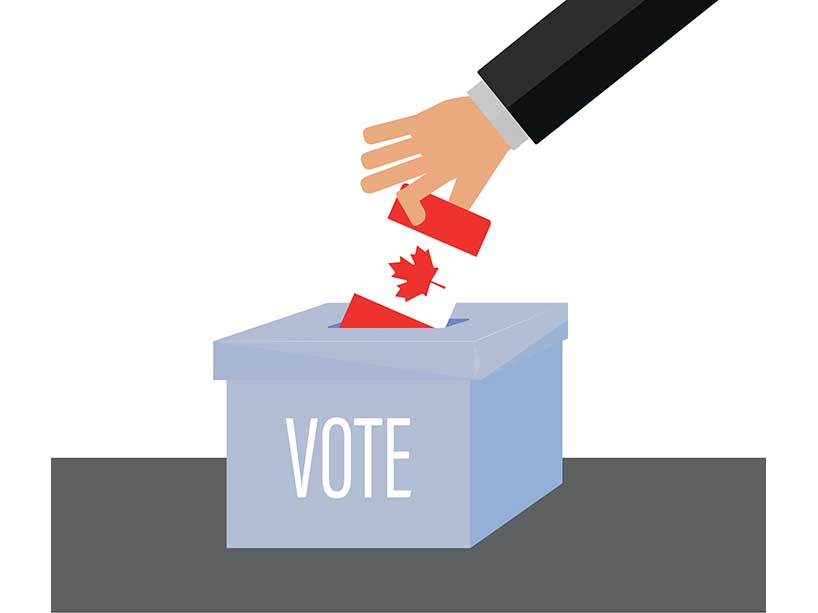Get ready to vote with this election guide

An effort to demystify the voting process while engaging new and infrequent voters led to the Canadian Vote Coalition that aims to drive democratic participation.
Elections Canada reported that in the last federal election, more than nine million eligible Canadians did not vote, including more than three million young Canadians between the ages of 18 to 34.
This month, in the midst of a pandemic and two years ahead of schedule, another election will decide whether Prime Minister Justin Trudeau will get a third mandate and regain the Liberal Party’s majority in Parliament. Are voters ready to make sure their voices are heard this time?
“Voting is easy for Canadians, but many people think it’s difficult or takes too much time. It’s also safer to vote in-person right now than to go grocery shopping, because you will be there for much less time and there are more precautions being taken at polling stations with plexiglass barriers and physical distancing,” said John Beebe, senior adviser for democratic engagement in the Faculty of Arts and founder of the Democratic Engagement Exchange (external link) .
To engage new and infrequent voters, the Democratic Engagement Exchange has partnered with Apathy is Boring (external link) and launched the Canadian VOTE Coalition (external link) – the only national non-partisan campaign that brings together more than 300 community organizations and hundreds of local leaders who share a commitment to voter engagement, and provides them with free training, tools and resources to engage their community and drive voter participation.
“The Coalition empowers organizations who have established trusted relationships with vulnerable communities – the social service providers, community organizations and local leaders working at the frontlines. Through their work, we are able to engage and hear from people whose voices are too often left out of the democratic discourse. Coalition members like Access Alliance (external link) are demystifying voting for new Canadians in Scarborough by using our Vote Pop-Up toolkit,” said Beebe.
Addressing some of the top questions and concerns that voters might have, below are some useful tips from experts that can help you get ready to vote.
Why should I vote?
“Decisions that are made today by governments probably affect young people more than any other group in society. Everything from the cost of tuition to the impact on the environment and the future of the job market is affected by who gets elected,” said Peggy Nash, senior advisor to the dean of Faculty of Arts and a distinguished visiting professor at the university.
Recognizing that many people don’t vote because they feel that they don’t know enough about political or social issues, elections, or the voting process, experts believe that voters need to value their own voice to bring about change.
“Elections are an opportunity for people to shape their own future, weigh in on critical issues and have a say in what happens in our country. You don’t have to be an expert on politics to participate. Everyone has their own lived experiences and it’s important that their perspective be heard,” said Beebe.
What are my voting options?
Every Canadian citizen who is at least 18 years old is eligible to vote. Voters can cast their ballots at their assigned polling station on election day, Monday, Sept. 20. Polls will be open for 12 hours.
“Voting in-person is going to be safe, but I would also suggest voting in advance when there are fewer people at polling stations. Every electoral district has early voting where people can go and vote before election day,” said Nash.
As per Elections Canada, advance polling days are from Friday, Sept. 10 to Monday, Sept. 13 from 9:00 a.m. to 9:00 p.m.
Experts also suggest voting by mail, especially for students who want to vote in their home riding but aren't able to be there in person. Voters can apply to vote by mail either online or at any Elections Canada office, before the Sept. 14 deadline.
Additionally, voting is available at any Elections Canada office across the country before 6:00 p.m. on Tuesday, Sept. 14.
The Elections Canada website (external link) is the best resource to learn more about your voting options, experts say.
How do I prepare myself to vote?
While most Canadians who are eligible to vote are already registered, you can use the Online Voter Registration Service (external link) to confirm your registration. If you aren’t registered, you can do so either online or in person at any Elections Canada office by Sept 14. You can also register at your assigned polling station on election day or advance polling days.
Experts advise finding which electoral district you belong to (external link) and your nearest polling station ahead of time, and then learning more about the candidates in your electoral district.
“Parties release platforms with details about everything they stand for in an election. If there’s a particular issue someone is interested in, they should check with all parties to see what their platform is. You can do that online or just call your local candidate and ask them. A great part of democracy is the all-candidates meetings held in local communities where candidates make short presentations and answer questions from the public. These are great opportunities to meet the candidates, get to see their personalities and hear what they stand for,” said Nash.
Voting is simple since all you need is a government issued photo ID with a current address. Alternatively, voters can show two pieces of ID with at least one of them including their address. Voters can still cast their ballots without ID if someone who is assigned to the same polling station can vouch for them and confirm their identity.
More information on what you need to successfully vote is available through Elections Canada (external link) .